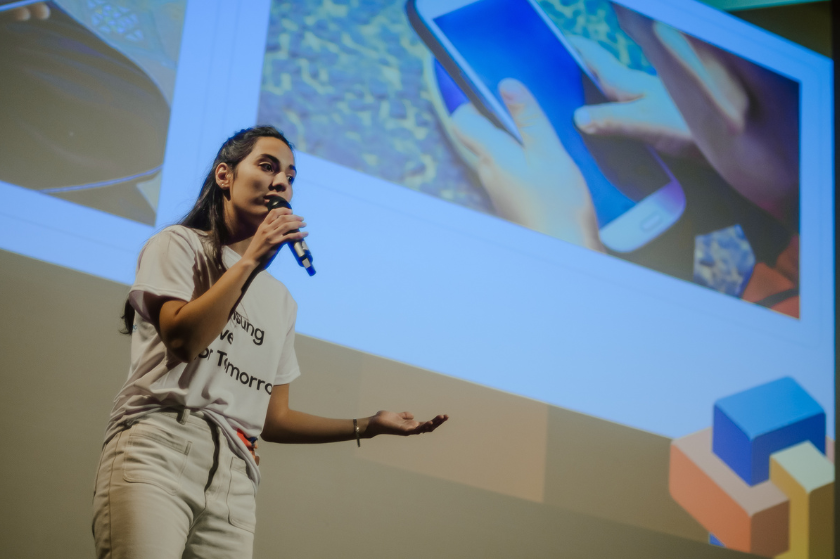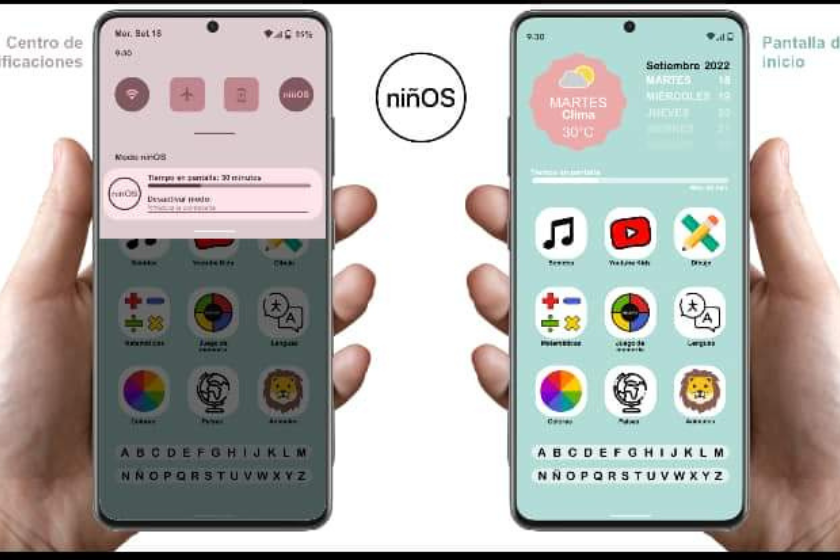Anyone who lives with children has probably worried at some point about their excessive exposure to screens. The presence of televisions, mobile phones and computers, among other devices, is constant and, especially since the pandemic, there has been a lot of debate about the effect that “being connected” all the time can have on mental and physical health. Students of a school in Carmelo (Uruguay) also worried about this observing their younger siblings and relatives, so they decided to create a way to control the screen time of children between 1 and 7 years old.
The project was called niñOS and the last two letters in capital letters refer to the acronym for Operating System, which is the base program that manages all the device’s resources. The solution was one of the finalists at the Solve for Tomorrow Argentina, Paraguay and Uruguay in 2022. The software developed is capable of regulating the quality and quantity of time that children spend with the devices. This way, adults can control the use and settings of the screen.

At that time, the four students involved had spent two years experiencing the pandemic, between distance education and the hybrid model. That is to say, they themselves had experienced a unique moment of screen excess , although they were already a generation that had grown up with this type of technology.
In 2022, when they were in the sixth year of high school (the last year of compulsory schooling) and had to choose a topic to work in class, they decided to follow this path. In Uruguay, final year includes a subject called Economic and Social Studies, which is characterized by project-based learning.
“The statistics they looked at globally from 2020 to 2022 showed that, in just a two-year period, the number of hours that children ages 0 to 7 spent in front of a screen increased by almost 40 percent. “said mediator teacher Victoria Calcaterra. According to her, the consequences of this excessive exposure range from cognitive and physical development to even problems with vision, posture and poor socialization with other children.
While carrying out the bibliographic research, the students conducted interviews with two experts: a neuropediatrician and a psychologist, to better understand the context. “They got an interview with the ‘number one’ in neuropediatrics in Uruguay. That was great. I participated with them and I am proud because the kids already knew a lot, they had read to be prepared. It was an important moment because they felt that what they were doing had real value,” the teacher recalls happily.
Union of theory with hands-on work
In addition to the research and conversations with professionals, the teens also did a case study with five children. One was the teacher’s daughter and the others were relatives of the students. “They gave them cell phones on the one hand, then several games. And they saw what they preferred in the situations, what they were most entertained with, what language they used while playing and when they watched a YouTube video,” described the educator.
They repeated the tests three times and filmed them for later analysis. “Obviously it was very subjective because we didn’t have a professional telling us how to follow the steps, but it was a smaller attempt at a case study,” Calcaterra warns.
The teacher believes that the best thing about doing projects like this at school is that students can understand how scientific methodology works, although on a simpler scale, and discover in practice what their soft and technical skills are. “We can see that one student excels in computing, while another is more communicative; each one finds his or her place on the team,” she points out.
Transforming knowledge into a tool
The initial idea was based purely on research. The creation of an app arose when they decided to enroll in Solve for Tomorrow, because the program encourages the creation of a technological solution. One of the students, Máximo Cardozo, who already had his own experience with applications, had the idea and began designing the software, with the help of a design teacher. “The goal was not for children not to use the screen, but to use them in a way that was more appropriate to their development,” the teacher stressed.
And how to do it? The group planned a way for adults to control how much time a child uses the smartphone and only access educational games and other applications deemed appropriate. “We have cell phones and we know that some of those devices already have parental control. That was one of our inspirations,” reports Calcaterra.

However, the team would like to go beyond replicating a parental control mode, creating educational games themselves as options for children. Thus, every time one was created, Máximo showed it to his nephews to verify the user experience. Later, in the testing stage, they tested with the group of five children and again at a school exhibition, which is an event where students present their projects at a stand.
In the end, the result was an operating system created independently, but with the potential to later be transformed into an app that anyone can use on their own phones. Now, the four students are already in college. Máximo is studying Design and the other three are studying different engineering.
For Victoria Calcaterra, the lesson that remaining looking back, is to reinforce the extent to which the student is capable of transforming the world:
The imagination that a teenager has is formidable. As a teacher we have to see that they are great, have many ideas and care much more than it seems, she concludes.




